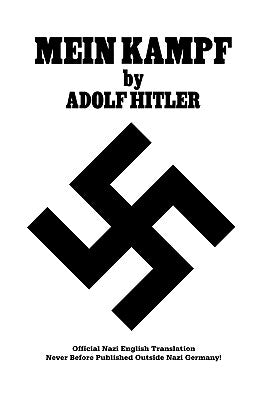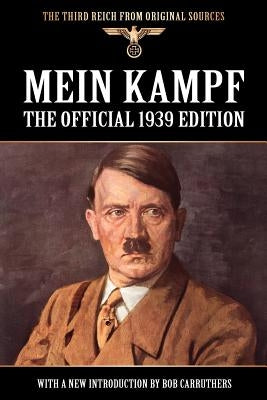The Evolution of Horror Fiction

Horror fiction has a rich and varied history that reflects changing societal fears, technological advances, and shifts in literary style. From its early origins in gothic tales to the diverse range of modern horror, the genre has continually evolved to capture the imagination and unease of readers. In this article, we’ll explore the evolution of horror fiction, tracing its development from classic novels to contemporary trends, and examining how influential writers have shaped the genre.
The Origins of Horror Fiction
Horror fiction, as we understand it today, has roots that stretch back to ancient literature, but it began to take a distinct shape during the Gothic period of the late 18th and early 19th centuries. Early horror literature often combined elements of the supernatural with psychological terror, setting the stage for future developments in the genre.
1. Gothic Horror (Late 18th - Early 19th Century)
The Gothic novel, with its emphasis on dark, eerie settings and supernatural elements, marks one of the earliest forms of horror fiction. Key works from this period include:
- The Castle of Otranto (1764) by Horace Walpole: Often considered the first Gothic novel, it set the tone for the genre with its blend of medieval settings, mysterious events, and supernatural elements.
- Frankenstein (1818) by Mary Shelley: A cornerstone of horror fiction, Shelley's novel explores themes of creation, responsibility, and the dangers of playing God, all set against a dark and foreboding backdrop.
- Dracula (1897) by Bram Stoker: Stoker's classic vampire tale introduced the character of Count Dracula and established many conventions of the vampire genre.
These early works laid the groundwork for horror fiction by combining gothic aesthetics with psychological and supernatural themes.
The Rise of Psychological Horror

As the 19th century progressed, horror fiction began to explore the psychological aspects of fear and terror. This period saw the emergence of stories that delved into the human psyche, blending elements of horror with psychological complexity.
2. Psychological Horror (Late 19th - Early 20th Century)
- The Turn of the Screw (1898) by Henry James: This novella uses a haunted house setting to explore themes of madness and unreliable narration, leaving readers questioning the reality of the supernatural elements.
- The Yellow Wallpaper (1892) by Charlotte Perkins Gilman: This short story, written as a series of journal entries, depicts the narrator's descent into madness, offering a critique of the treatment of women’s mental health.
Psychological horror focuses on the inner workings of the mind and how they can be manipulated or distorted to create fear, offering a shift from purely supernatural horror to more nuanced psychological terror.
The Birth of Modern Horror Fiction

The early to mid-20th century brought about significant changes in horror fiction, as writers began to explore new themes and incorporate contemporary anxieties into their work. This period saw the rise of horror as a mainstream genre, with a focus on more explicit and graphic content.
3. Modern Horror (Mid 20th Century - Present)
- Psycho (1959) by Robert Bloch: Bloch’s novel, which inspired Alfred Hitchcock’s iconic film adaptation, explores themes of identity, madness, and violence. It marked a shift towards more psychological and visceral horror.
- The Shining (1977) by Stephen King: Stephen King’s novel introduced a new wave of horror fiction, blending supernatural elements with deep psychological exploration. King’s work has been influential in shaping modern horror with its emphasis on character development and detailed settings.
- American Psycho (1991) by Bret Easton Ellis: This novel delves into the extremes of violence and consumerism, reflecting contemporary fears about identity and morality.
Modern horror fiction often incorporates elements of psychological horror, while also exploring new themes such as societal issues, personal trauma, and technological anxieties. The genre has diversified to include a range of sub-genres, from slasher fiction to paranormal thrillers.
Influential Horror Writers and Their Impact

Several influential writers have played a significant role in shaping the evolution of horror fiction. Their contributions have not only defined the genre but also pushed its boundaries.
4. Influential Horror Writers
- H.P. Lovecraft: Lovecraft’s work, characterized by its cosmic horror and the creation of the Cthulhu Mythos, introduced a new dimension of horror that emphasizes the insignificance of humanity in the face of vast, unknown forces.
- Clive Barker: Barker’s blend of fantasy and horror, as seen in works like "Hellbound Heart" (1986), has expanded the genre with its innovative approach to supernatural elements and dark fantasy.
- Shirley Jackson: Known for "The Haunting of Hill House" (1959) and "We Have Always Lived in the Castle" (1962), Jackson’s psychological horror often explores themes of isolation, madness, and societal norms.
These writers have expanded the genre’s scope, incorporating new themes and techniques that have influenced subsequent generations of horror authors.
Contemporary Trends in Horror Fiction

In recent years, horror fiction has continued to evolve, reflecting contemporary fears and societal changes. New trends include the blending of horror with other genres, increased focus on diversity, and innovative storytelling techniques.
5. Contemporary Trends
- Horror and Science Fiction: Many modern horror writers incorporate elements of science fiction, exploring themes of technology and the future. Books like "The Expanse" series by James S.A. Corey blend space opera with horror elements.
- Diverse Voices in Horror: There is a growing emphasis on diversity within the genre, with writers from various backgrounds bringing new perspectives and experiences to horror fiction. This trend is enriching the genre and offering readers fresh and varied narratives.
- Metafiction and Experimental Forms: Contemporary horror often experiments with narrative structure and metafictional techniques, creating stories that play with genre conventions and reader expectations.
These trends reflect the genre’s adaptability and its ability to engage with current issues and new forms of storytelling.
The Evolution of Horror Fiction
The evolution of horror fiction reveals a dynamic genre that has continually adapted to reflect changing fears, societal issues, and literary innovations. From the gothic tales of the 18th century to the diverse and experimental works of today, horror fiction has provided a mirror to our darkest anxieties and deepest curiosities. By exploring the history of horror literature, influential writers, and contemporary trends, readers can gain a deeper appreciation for the genre’s rich and varied landscape. As horror fiction continues to evolve, it promises to offer new and unsettling explorations of the human condition, ensuring its place as a vital and ever-changing genre in literature.
Explore your favorite book at your own online bookstore.
Happy Reading!








